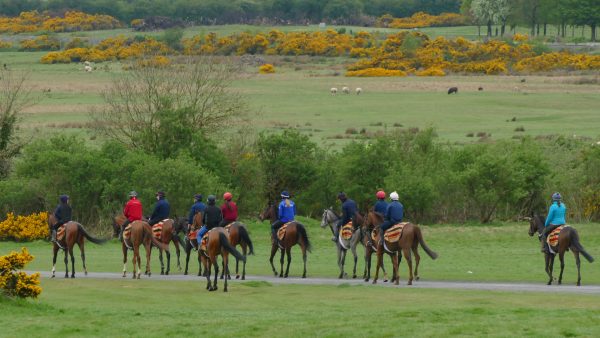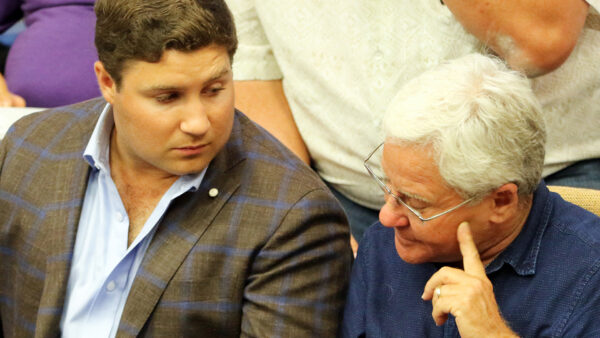by Emma Berry (6-minute read)
(AUDIO: Click here to listen to this story.)
It has been 400 years since the first Spring Meeting was run at Newmarket, during the reign of James I, in 1619.
While racing took place in different guises and at other locations around the world before that time, the formalised sport of horseracing as we now know it began in the small East Anglian town which remains a global focus for the ‘sport of kings’.
All elements of what it takes to compete in the sport at the highest level are found here; a cocktail of Thoroughbred nurturing at its very best.
The interest of James I lay predominantly with hunting, and the vast, flat plains that encircle the town provided the perfect playing field for his sporting endeavours. But it was his grandson, Charles II, whose interest propelled not just horseracing but also the town of Newmarket to wider prominence. Noted by racing historian Richard Onslow for his preference of “chasing women and racing horses”, Charles II’s local legacy runs to his magnificent former dwelling, Palace House, and its neighbouring racing stable, and Onslow’s claim is backed up by the fact that the King’s mistress, Nell Gwyn, was installed in a cottage nearby with a secret passageway purportedly linking the two properties. The remaining part of Palace House looms large to this day in the centre of the town and has recently been lovingly restored as the National Heritage Centre for Horseracing and Sporting Art.

Charles II, nicknamed Old Rowley, also gave this moniker to one of Newmarket’s two racecourses, the Rowley Mile, as well as inaugurating what has become the country’s oldest race still to be run on a racecourse. The Town Plate, contested over three and three-quarter miles by amateur riders, has been run since the mid-1660s and was won by the King himself in 1671. The royal Corinthian spirit has lived on into the modern era and, in 2016, Qatar’s Sheikh Fahad Al Thani completed the marathon contest to record his first win in the saddle.
From a racing perspective, Newmarket now thrives, though its fortunes have waxed and waned over the centuries. But as fashions changed, and owners and trainers came and went, the one constant has been the daily appearance, across the acres of cushioned turf, of Thoroughbreds honed to near-genetic perfection through centuries of select breeding and diligent rearing.
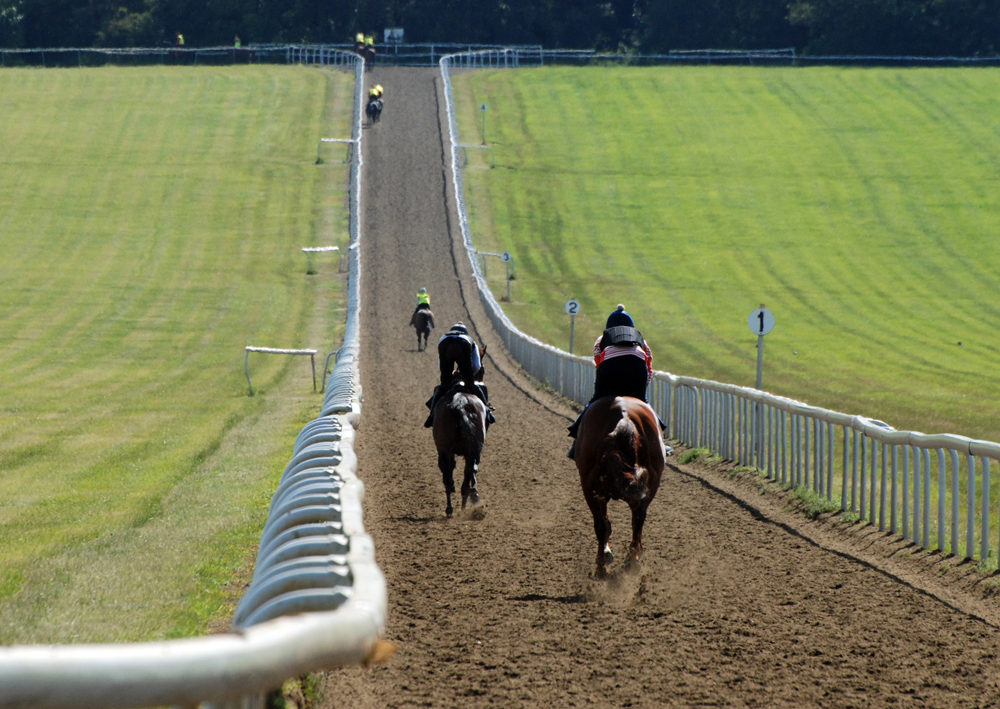
It is an almost timeless sight. Riding styles and equipment may change, but the poetic beauty of a racehorse in barely contained full flight has captured hearts and minds down the generations and is a scene which can be witnessed any morning of the year on Newmarket Heath.
To the wider world, it is perhaps what happens on the select afternoons of spring, summer and autumn for which Newmarket is globally renowned. It was here that Frankel (GB) (Galileo {Ire})–a local boy through and through, having been born at Banstead Manor Stud, where he now stands as a stallion–first set foot on a racecourse. On that rainy August day in 2010 he made the first of his 14 unbeaten appearances that would propel him to legendary status. And Frankel is perhaps the perfect embodiment of Newmarket, where it is impossible to split breeding, training and racing. All elements of what it takes to compete in the sport at the highest level are found here; a cocktail of Thoroughbred nurturing at its very best.
Of course it starts on the farther reaches of Newmarket, at stud farms which nowadays are home to such breeding behemoths as Darley and Juddmonte, alongside the successful independent farms of Lanwades and Cheveley Park Stud. In the heart of it all sits the National Stud, adjacent to the July Course, which at this time of the year is the focal point for action.
The poetic beauty of a racehorse in barely contained full flight has captured hearts and minds down the generations and is a scene which can be witnessed any morning of the year on Newmarket Heath.
Considering the Rowley Mile and July Course are effectively two halves of the same giant swathe of turf, cleaved by the seven-mile Devil’s Dyke, the ambience of the two racecourses could hardly be more starkly contrasting. The Rowley Mile, the venue for the spring Classics and autumn’s informative juvenile contests, is a track largely favoured by racing cognoscenti, who are unruffled by the fierce east wind which can whip unchallenged across the enclosures. The July Course, on the other hand, with the speckled light of its tall tree-lined pre-parade ring, is a place to while away the hours of a summer’s afternoon, high up in the shade of the old stand where the original wooden benches lend it a comforting air of understated grandeur.
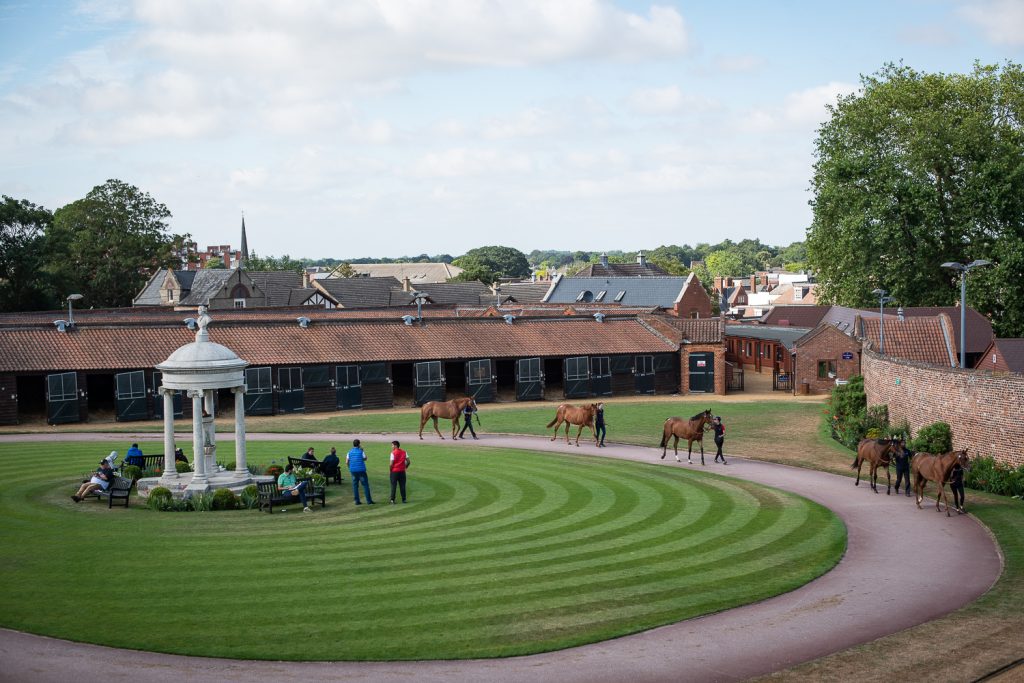
In mid-July, Newmarket is truly en fête. The summer racecourse serves up its best three days of racing, culminating in the G1 Darley July Cup, while myriad events perform supporting acts. With the foaling and covering season complete, breeders descend on Newmarket to attend stallion parades and parties, and perhaps to stock up for the following season at Tattersalls’ July Sale.
Whatever your involvement in the racing world–whether as an active participant or fan–the sales ring can be the perfect place to indulge in a spot of both people- and equine-watching. The July Sale, conducted for two of its three days before and after the racing action of Newmarket’s Moet & Chandon July Festival, has a relatively carnival atmosphere in comparison to the more serious yearling and breeding stock sales of October and December.
The one constant has been the daily appearance, across the acres of cushioned turf, of Thoroughbreds honed to near-genetic perfection through centuries of select breeding and diligent rearing.
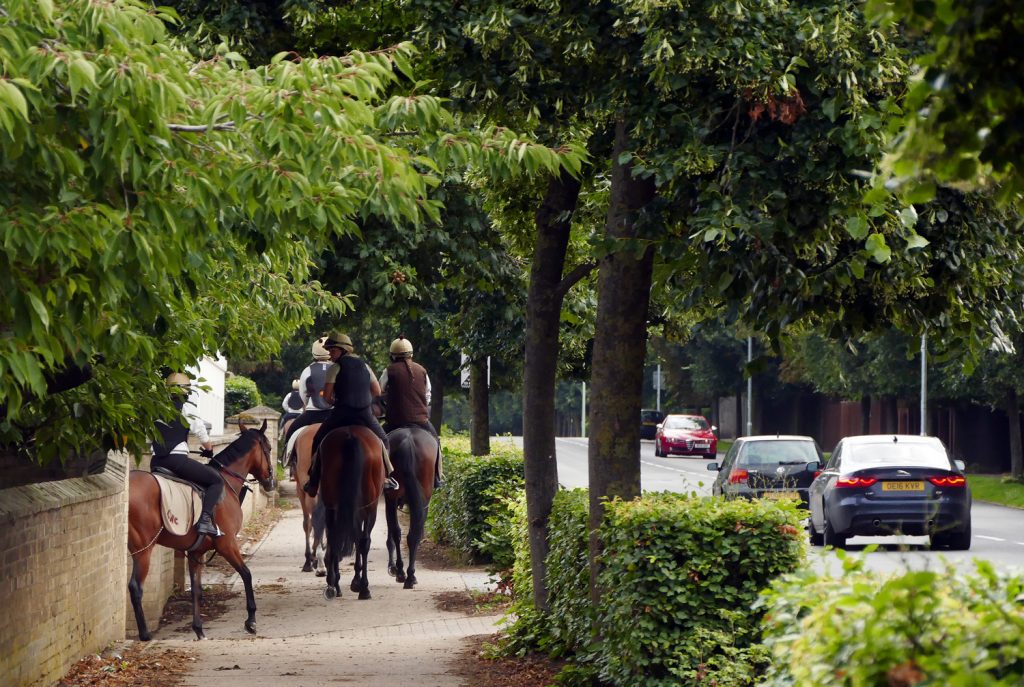
The backdrop to this week remains the same as it does for every week of the year, however. From 6 a.m., the heath is abuzz with some 3,000 racehorses trained in the town by almost 80 trainers ranging from 10-horse stables to those with more than 200, all with one aim at heart. Nowhere in Britain are the facilities more perfectly tailored to honing the athletic potential of Thoroughbreds. The training grounds, formally managed by Jockey Club Estates, run to 2,500 acres, with 50 miles of turf gallops and another 14 miles of all-weather tracks, as well as specially designated horsewalks alongside roads to allow for safe passage of horses and riders to and from Newmarket Heath.
Shakespeare had more warlike themes in mind when he wrote the lines, “Think, when we talk of horses, that you see them, printing their proud hoofs i’ th’ receiving earth.”

But standing on Newmarket Heath at dawn as a low mist swirls and the sun rises from behind Warren Hill, it is easy to imagine the countless good horses who have printed their hooves on this turf down the years and will continue to do so for generations to come.
It is a place of wonder. It is a place, first and foremost, for the racehorse.



